For Badnoodles: Some amphibians
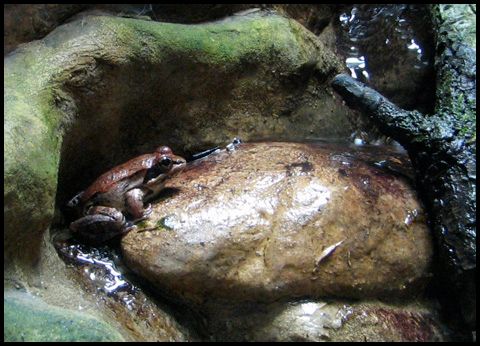
badnoodles donated in order to see a picture of an amphibian. As it happens, there is a whole row of exhibits next to each other in Children's Zoo, so I tried a few shots. I can't guarantee for everyone that I'll get 6 species for your 5 dollar donation, but this was fun!
Above you see a wood frog, a native North American amphibian, and the species found further north than any other. They prefer to breed in vernal pools, and during the breeding season their quacking calls make you think there are invisible ducks in the pond. When I worked at Drumlin Farm I encountered them frequently.
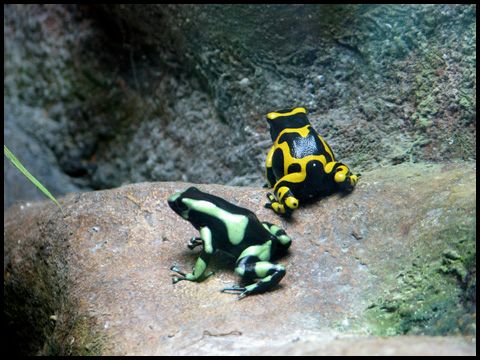
It's a two-fer! Poison dart frogs of the green and black (Dendrobates auratus) and yellow-and-black (D. leucomelas) varieties. Poison dart frogs are not poisonous in captivity. In the wild they derive poisonous compounds from their variety of insect prey (probably from plant-feeding true bugs and mites), but their captive diet of wingless fruit flies and pinhead crickets does not provide them.
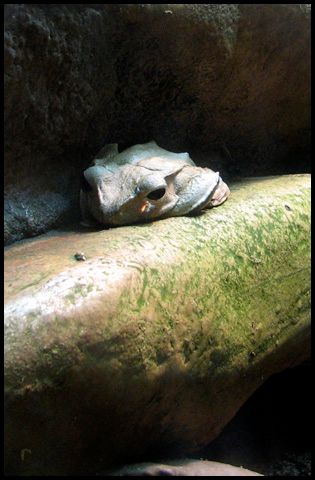
Here's a sleepy Bornean eared frog (Polypedates otilophus), named for the bony projections on the sides of its head.
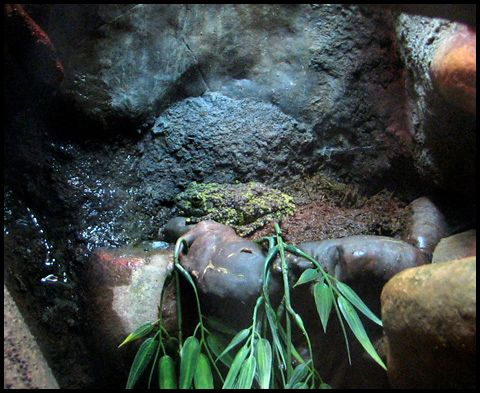
In the same exhibit there are Vietnamese mossy frogs (Theloderma corticale). I love the elaborate camouflage of this amphibian.
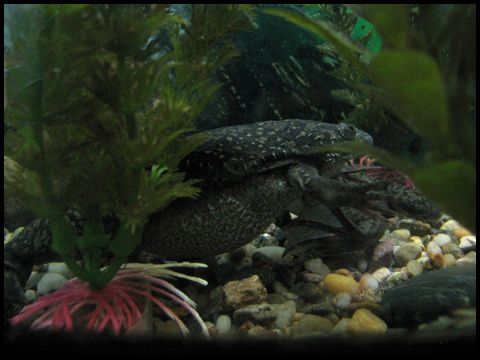
*Cue dramatic music* And here we have the great villain of the amphibian world. Well, it's not the fault of the Xenopus frog that most of the world's (other) amphibian species are disappearing, it's the fault of human use of the Xenopus frog. These weird fully aquatic frogs, sold in pet stores as "African clawed frogs," were used in human pregnancy tests in the 20th century. They were carrying a primitive fungus (one the fungi species that's closely related to animals, Batrachochytrium dendrobatidis) which did not harm them but causes fatal disease in other amphibians. This disease is commonly called "Chytrid," and is rapidly spreading around the world. Scientists like my boss Dr. Eric Baitchman, are in a race against time to save amphibians. 165 have gone extinct and another 500 species are thought to be in immediate danger of extinction. It's the greatest extinction event since the last one humans caused, 400 years ago, traveling from island to island eating everything that wouldn't run away.
More info: http://www.amphibianark.org http://amphibianrescue.org/
Sorry, didn't mean to get sad and scary there, but that's the purpose of a zoo: to excite you with the presence of real live animals, then to engage you in protecting them.
I hope you like your frog pictures, badnoodles! Thanks for your donation!
If you would like me to take a picture of one of Zoo New England's animals, please donate $5.00 to the New England Chapter of the American Association of Zoo Keepers! I'll even send you a sticker.
Still forthcoming: Pictures of prairie dogs and something large (donor specified elephant, rhino, hippo or giraffe).